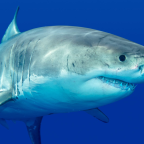
Russian explorers dived deep below the North Pole in two submersibles yesterday and planted a national flag on the seabed to stake a symbolic claim to the energy riches of the Arctic.
A mechanical arm dropped a specially made rust-proof titanium flag on to the Arctic seabed at a depth of 4,261 meters.
Russia wants to extend right up to the North Pole the territory it controls in the Arctic, believed to hold vast reserves of untapped oil and natural gas.
But Canada mocked Russia’s ambitions and said the expedition was nothing more than a show.
“This isn’t the 15th century,” said Foreign Minister Peter MacKay. “You can’t go around the world and just plant flags and say `We’re claiming this territory’.”
Under international law, the five states with territory inside the Arctic Circle – Canada, Norway, Russia, the United States and Denmark via its control of Greenland – have a 320 kilometer economic zone around the north of their coastline.
Russia is claiming a larger slice extending as far as the pole because, Moscow says, the Arctic seabed and Siberia are linked by one continental shelf.
“Then Russia can give foundation to its claim to more than a million square kilometres of the oceanic shelf,” said a newsreader for Russia’s state news channel Vesti-24, which made the expedition its top news story.
“It was a soft landing,” Tass quoted expedition leader Artur Chilingarov as saying from on board one of the submersibles.
The rest of the expedition team, floating on a support vessel between the giant ice sheets of the Arctic, broke into applause when news came through the mission had been completed.
“There is yellowish gravel down here,” said Chilingarov, 67, a veteran Arctic explorer and parliament deputy for the pro-Kremlin party. “No creatures of the deep are visible.”
The first submarine resurfaced after spending eight hours and 40 minutes under water. The second resurfaced an hour later.
One of the aims of the expedition is to allow oceanographers to study the seabed and establish that Russia and the North Pole are part of the same shelf.
“The aim of this expedition is not to stake Russia’s claim but to show that our shelf reaches to the North Pole,” Foreign Minister Sergei Lavrov said in Manila, where he was attending a regional security conference.
The second Russian submersible, manned by Swedish businessman Frederik Paulsen and Australian adventurer Mike McDowell, reached the seabed 27 minutes later. It reached a depth of 4,302 meters.
Soviet and US nuclear submarines have often travelled under the polar icecap, but no one had reached the seabed under the Pole, where depths exceed 4,000 meters.
Source: Reuters












Social Profiles